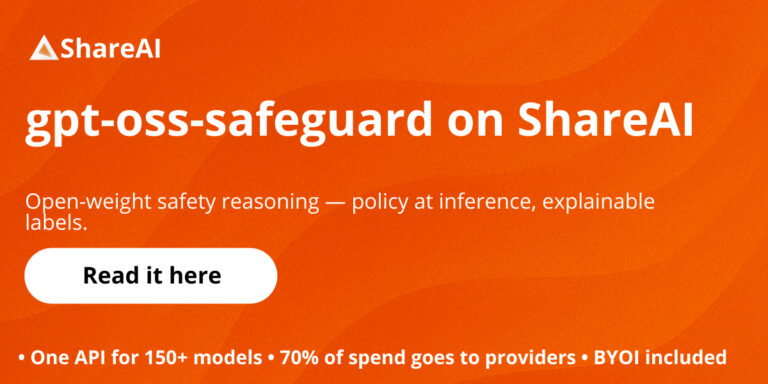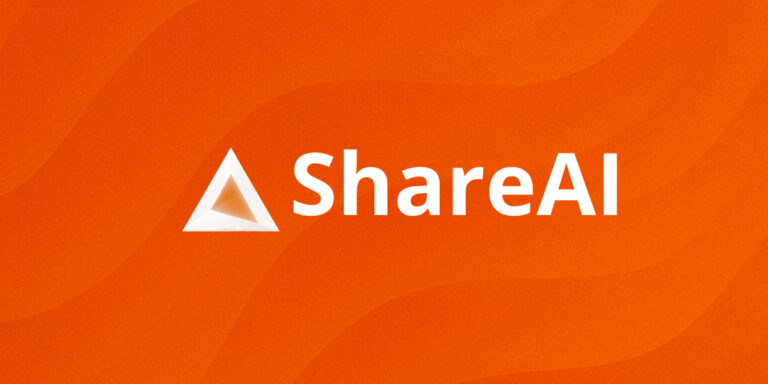IBM API Connect Alternatives 2025: Top 10 Picks (IBM API Connect vs ShareAI)
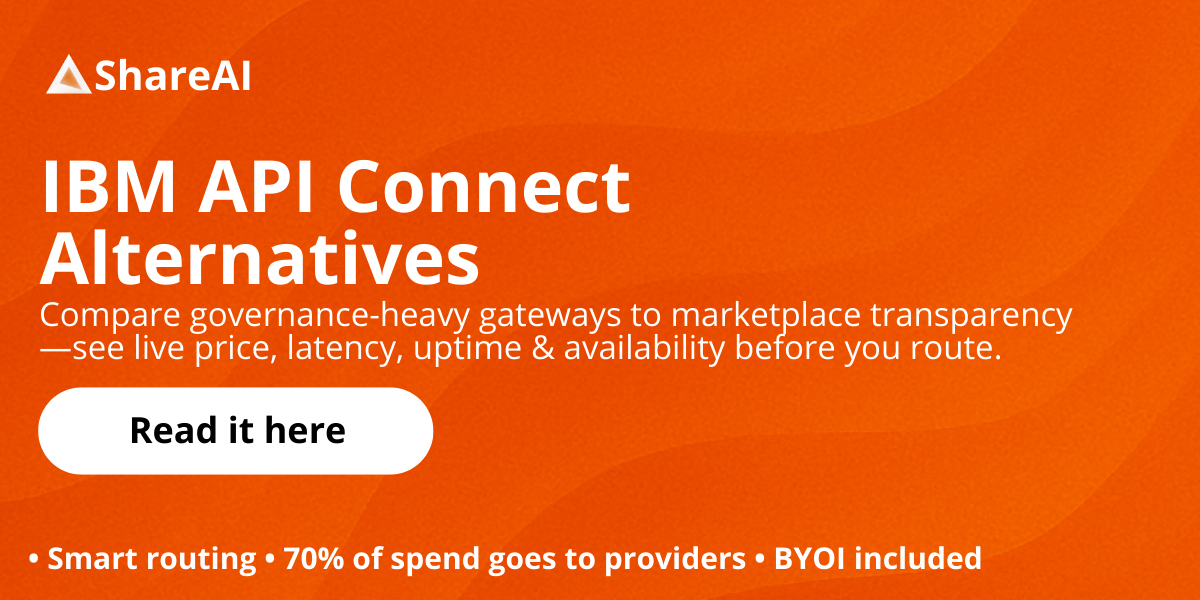
Updated November 2025
If you’re evaluating IBM API Connect alternatives, this builder-first guide clarifies what IBM API Connect is (and isn’t) for AI workloads, then compares the 10 best alternatives across model breadth, governance, observability, routing/failover, pricing transparency, and developer experience. We place ShareAI first for teams that want one API across many providers, a transparent marketplace with price/latency/uptime/availability before routing, instant failover, and people-powered economics (70% of spend goes to providers).
Quick links — Browse Models · Open Playground · Read the Docs · Create API Key · See Releases
What IBM API Connect is (and isn’t) for AI

IBM API Connect is a full-stack API management platform: design, secure, publish, and observe APIs with a developer portal and enterprise-grade governance. For AI use cases, you typically place LLM providers or your own inference services behind IBM’s gateway to apply centralized credentials, policies, quotas, and analytics. That’s a governance-first gateway and lifecycle suite—not a transparent multi-provider model marketplace.
If your primary need is egress governance and a mature API lifecycle, IBM fits the lane. If your priority is provider-agnostic AI routing with pre-route transparency (price/latency/uptime/availability), instant failover, and one API across many providers/models, choose an aggregator like ShareAI—you can still pair it with a gateway.
Aggregators vs Gateways vs Agent platforms
- LLM aggregators: one API across many models/providers with marketplace transparency (price, latency, uptime, availability, provider type) and smart routing/failover. Examples: ShareAI, OpenRouter, Eden AI.
- AI/API gateways: enforce policies/quotas/keys at the edge with observability; you bring your providers. Examples: IBM API Connect, Traefik AI Gateway, Kong, Azure API Management, AWS API Gateway, NGINX (DIY).
- Agent / orchestration platforms: packaged UX or flow builders (memory, tools, channels) geared to end-user assistants and pipelines. Examples: Orq, Unify.
Most enterprises combine at least two: a gateway for org policy + an aggregator for model choice and resilience.
How we evaluated the best IBM API Connect alternatives
- Model breadth & neutrality: proprietary + open; easy switching; no rewrites.
- Latency & resilience: routing policies, timeouts, retries, instant failover.
- Governance & security: key handling, scopes, regional routing, quotas.
- Observability: logs/traces, cost/latency dashboards.
- Pricing transparency & TCO: compare real costs before you route.
- Developer experience: docs, SDKs, quickstarts; time-to-first-token.
- Community & economics: whether your spend grows supply (incentives for providers).
Top 10 IBM API Connect alternatives
#1 — ShareAI (People-Powered AI API)
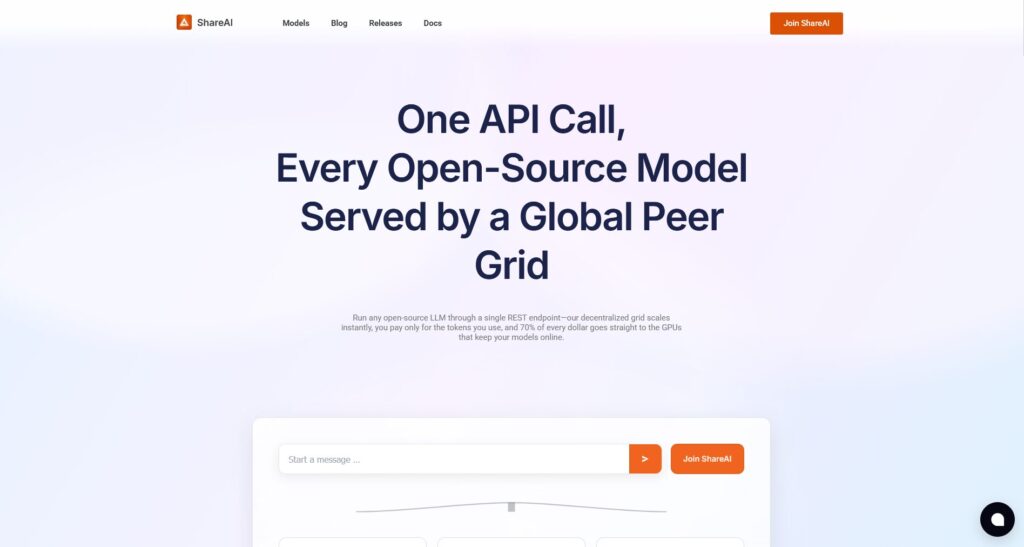
What it is. A multi-provider API with a transparent marketplace and smart routing. With one integration, browse a large catalog of models and providers, compare price, latency, uptime, availability, provider type, and route with instant failover. Economics are people-powered: 70% of every dollar flows to providers (community or company) who keep models online.
Why it’s #1 here. If you need provider-agnostic aggregation with pre-route transparency and resilience, ShareAI is the most direct fit. Keep a gateway if you need org-wide policies; add ShareAI for marketplace-guided routing.
- One API → 150+ models across many providers; no rewrites, no lock-in.
- Transparent marketplace: choose by price, latency, uptime, availability, provider type.
- Resilience by default: routing policies + instant failover.
- Fair economics: 70% of spend goes to providers (community or company).
Try it: Browse Models · Open Playground · API Reference
For providers: earn by keeping models online. Anyone can become a ShareAI provider—Community or Company. Onboard via Windows, Ubuntu, macOS, or Docker. Contribute idle-time bursts or run always-on. Choose your incentive: Rewards (money), Exchange (tokens/AI Prosumer), or Mission (donate a % to NGOs). As you scale, you can set your own inference prices and gain preferential exposure. → Provider Guide
#2 — OpenRouter
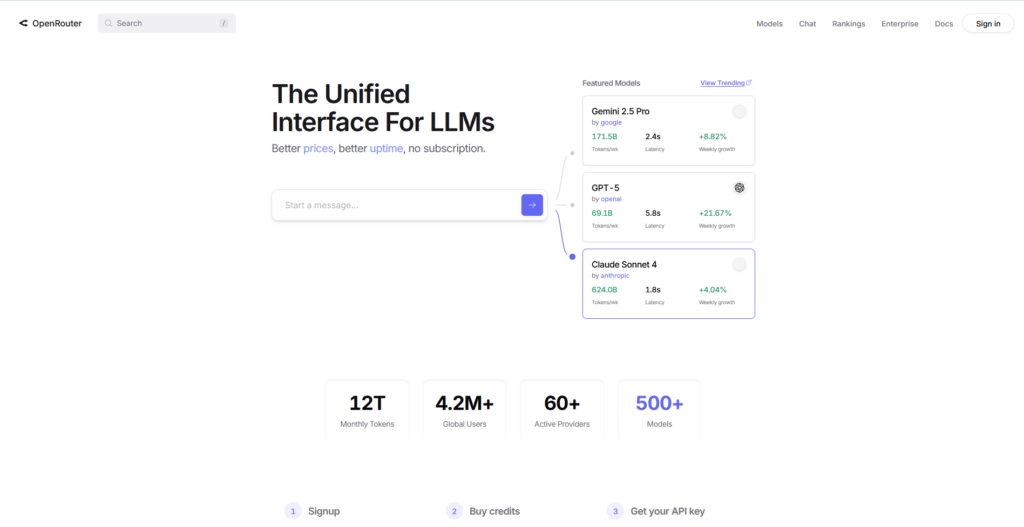
What it is. A unified API over many models—great for fast experimentation across a broad catalog.
Fit. Strong for quick multi-model access; routing and transparency differ by design vs a marketplace like ShareAI.
#3 — Traefik AI Gateway
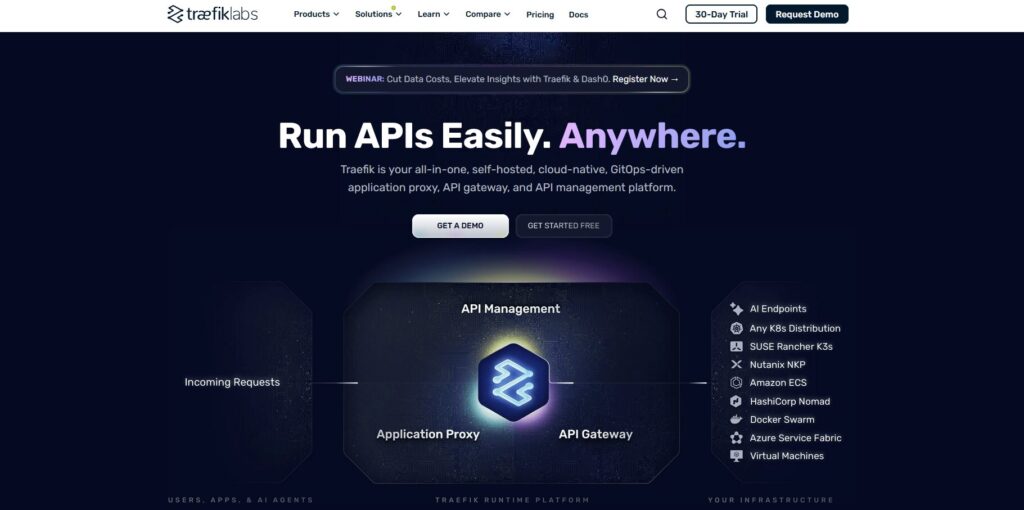
What it is. An LLM-specific control layer atop Traefik Hub’s API gateway: centralized credentials/policies, AI middlewares (e.g., content guard, caching), OpenTelemetry-friendly observability.
Fit. Governance-first gateway; you bring your providers. Often paired with ShareAI for marketplace-guided routing.
#4 — Kong (AI Gateway)
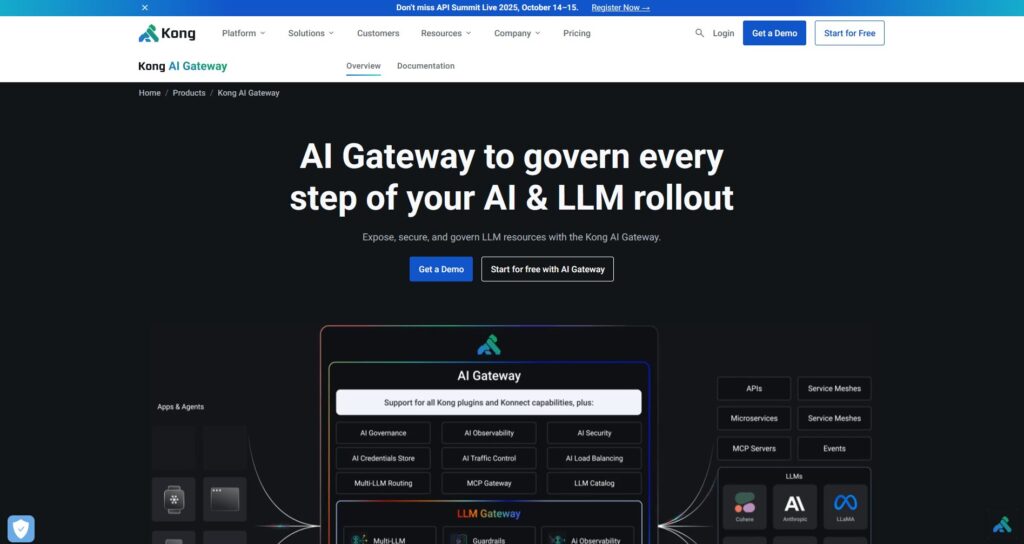
What it is. Enterprise-grade gateway with powerful plugins/policies, analytics, and edge security.
Fit. Governance & policy at the edge; pair with ShareAI when you want provider-agnostic routing and marketplace transparency.
#5 — Azure API Management

What it is. Microsoft’s API management platform covering design, publish, secure, and observe APIs.
Fit. Good for Microsoft-centric stacks; add an AI aggregator for multi-provider model choice and failover.
#6 — AWS API Gateway
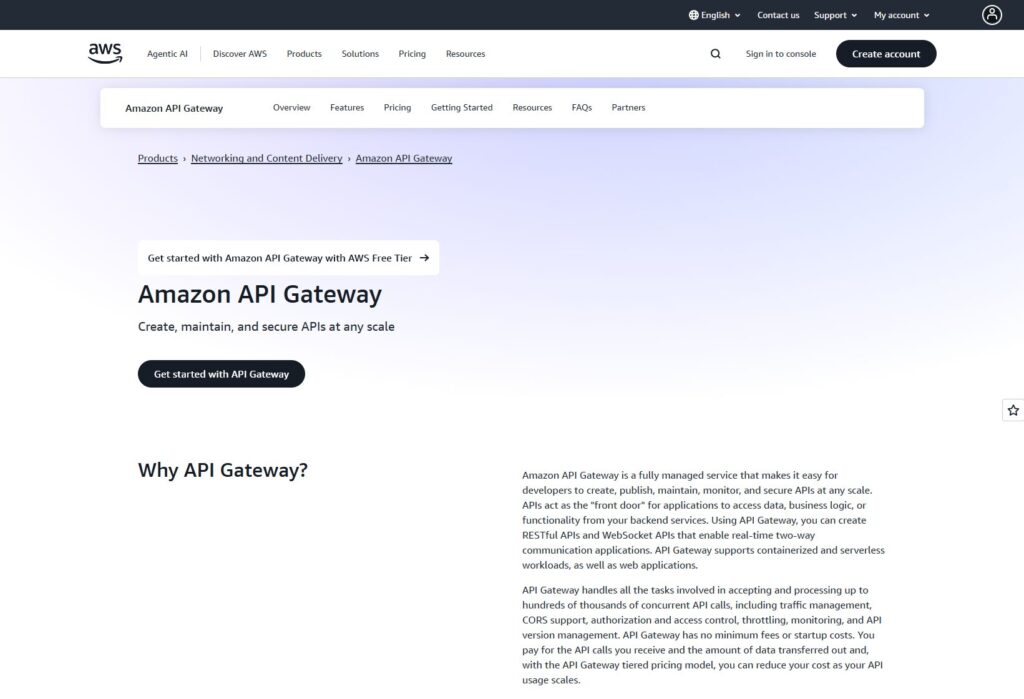
What it is. Fully managed gateway for creating and managing APIs in AWS.
Fit. Natural for AWS-native teams; combine with ShareAI to gain transparent provider selection and multi-cloud model access.
#7 — NGINX

What it is. A high-performance proxy you can customize for token enforcement, retries, and caching.
Fit. DIY flexibility if you want to code your own filters—often more ops overhead versus managed gateways/aggregators.
#8 — Eden AI
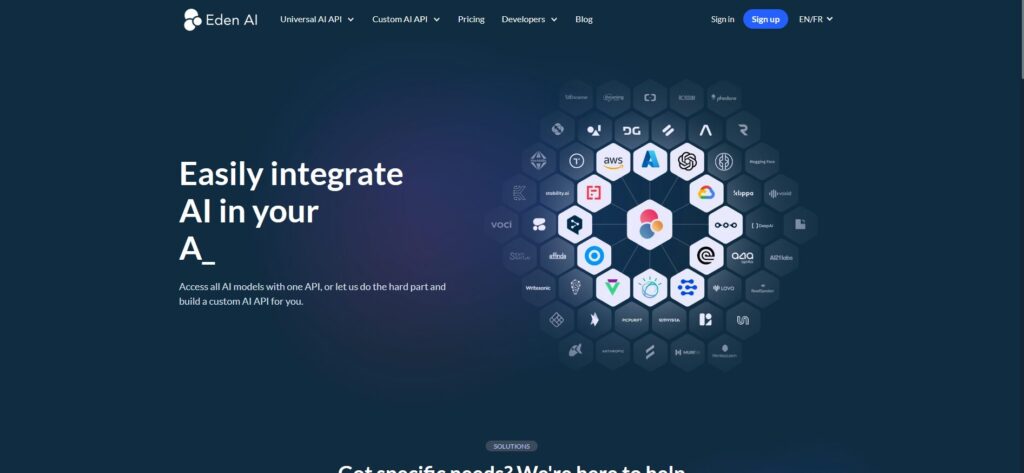
What it is. Aggregates LLMs plus other AI services (image, translation, TTS) with batching/fallbacks.
Fit. Broad AI surface area; marketplace transparency and provider incentives are less central than in ShareAI.
#9 — Unify

What it is. Quality-oriented routing and evaluation to pick better models per prompt.
Fit. Emphasizes evaluation-driven selection; pair with a gateway for policy—or with ShareAI for marketplace transparency.
#10 — Orq

What it is. Orchestration/collaboration platform for moving from experiments to production with low-code flows.
Fit. Strong for orchestration; complement with ShareAI for provider-agnostic routing and transparent trade-offs.
IBM API Connect vs ShareAI
If you need one API over many providers with transparent pricing/latency/uptime and instant failover, choose ShareAI. If your top requirement is egress governance—centralized credentials, policy enforcement, quotas, and analytics—IBM API Connect fits that lane. Many teams pair them: gateway for org policy + ShareAI for marketplace routing.
Quick comparison
| Platform | Who it serves | Model breadth | Governance & security | Observability | Routing / failover | Marketplace transparency | Provider program |
|---|---|---|---|---|---|---|---|
| ShareAI | Product/platform teams needing one API + fair economics | 150+ models, many providers | API keys & per-route controls | Console usage + marketplace stats | Smart routing + instant failover | Yes (price, latency, uptime, availability, provider type) | Yes — open supply; 70% to providers |
| IBM API Connect | Teams wanting end-to-end API lifecycle & governance | BYO providers | Strong centralized credentials/policies | Enterprise analytics/portal | Conditional routing via policies/middlewares | No (lifecycle tool, not a marketplace) | n/a |
| Traefik AI Gateway | Egress governance at the edge | BYO | Centralized credentials/policies | OpenTelemetry metrics/traces | Conditional routing via middlewares | No | n/a |
| Kong (AI Gateway) | Enterprises needing gateway-level policy | BYO | Strong edge policies/plugins | Analytics | Retries/plugins | No | n/a |
| Azure APIM | Microsoft-centric stacks | BYO | Azure policies/quotas | Azure Monitor | Policies/retries | No | n/a |
| AWS API Gateway | AWS-native teams | BYO | IAM/WAF/quotas | CloudWatch/X-Ray | Integrations/retries | No | n/a |
| NGINX (DIY) | DIY teams wanting code-level control | BYO | Custom | Add-ons | Custom | No | n/a |
| OpenRouter | Devs wanting one key over many models | Wide catalog | Basic API controls | App-side | Fallbacks | Partial | n/a |
| Eden AI | Teams needing LLM + other AI services | Broad | Standard controls | Varies | Fallbacks/caching | Partial | n/a |
| Unify | Quality-driven teams | Multi-model | Standard | Platform analytics | Best-model selection | n/a | n/a |
| Orq | Orchestration-first teams | Wide support | Platform controls | Platform analytics | Orchestration flows | n/a | n/a |
Pricing & TCO: compare real costs (not just unit prices)
Raw $/1K tokens hides the real picture. TCO shifts with retries/fallbacks, latency (which affects usage), provider variance, observability storage, and evaluation runs. A transparent marketplace helps you choose routes that balance cost and UX.
TCO ≈ Σ (Base_tokens × Unit_price × (1 + Retry_rate))
+ Observability_storage
+ Evaluation_tokens
+ Egress
- Prototype (~10k tokens/day): Optimize for time-to-first-token (Open Playground, quickstarts).
- Mid-scale (~2M tokens/day): Marketplace-guided routing/failover can trim 10–20% while improving UX.
- Spiky workloads: Expect higher effective token costs from retries during failover; budget for it.
Migration guide: moving to ShareAI
From IBM API Connect
Keep gateway-level policies where they shine; add ShareAI for marketplace routing + instant failover. Pattern: gateway auth/policy → ShareAI route per model → measure marketplace stats → tighten policies.
From OpenRouter
Map model names, verify prompt parity, then shadow 10% of traffic and ramp 25% → 50% → 100% as latency/error budgets hold. Marketplace data makes provider swaps straightforward.
From Traefik / Kong / Azure APIM / AWS API Gateway / NGINX
Define which policies remain at the edge (quotas, keys, OTel traces). Use ShareAI to select providers by price/latency/uptime/availability and fail over instantly.
From Eden AI
If you need broader AI services, you can keep Eden for non-LLM tasks. Use ShareAI for provider-agnostic LLM routing and marketplace transparency.
From Unify / Orq
Keep evaluation/orchestration where they’re strongest; use ShareAI for transparent provider choice and resilient routing.
Developer quickstart (JavaScript)
Replace YOUR_KEY with your ShareAI key—get one at Create API Key. See API Reference for details.
// JavaScript (fetch) — Node 18+/Edge runtimes
// Prereqs:
// process.env.SHAREAI_API_KEY = "YOUR_KEY"
async function main() {
const res = await fetch("https://api.shareai.now/v1/chat/completions", {
method: "POST",
headers: {
"Authorization": `Bearer ${process.env.SHAREAI_API_KEY}`,
"Content-Type": "application/json"
},
body: JSON.stringify({
model: "llama-3.1-70b",
messages: [
{ role: "user", content: "Give me a short haiku about reliable routing." }
],
temperature: 0.4,
max_tokens: 128
})
});
if (!res.ok) {
console.error("Request failed:", res.status, await res.text());
return;
}
const data = await res.json();
console.log(JSON.stringify(data, null, 2));
}
main().catch(console.error);
// JavaScript — simple function to call any model via ShareAI
// Tip: make the model name and provider part of configuration
export async function callShareAI({ model, messages, temperature = 0.4, max_tokens = 256 }) {
const res = await fetch("https://api.shareai.now/v1/chat/completions", {
method: "POST",
headers: {
"Authorization": `Bearer ${process.env.SHAREAI_API_KEY}`,
"Content-Type": "application/json"
},
body: JSON.stringify({ model, messages, temperature, max_tokens })
});
if (!res.ok) throw new Error(await res.text());
return res.json();
}
Security, privacy & compliance checklist (vendor-agnostic)
- Key handling: rotation cadence; minimal scopes; environment separation.
- Data retention: where prompts/responses are stored, for how long; redaction defaults.
- PII & sensitive content: masking; access controls; regional routing for data locality.
- Observability: prompt/response logging; ability to filter or pseudonymize; propagate trace IDs consistently (OTel).
- Incident response: escalation paths and provider SLAs.
FAQ — IBM API Connect vs other solutions
IBM API Connect vs ShareAI — which for multi-provider routing?
ShareAI. It’s built for marketplace transparency (price, latency, uptime, availability, provider type) and smart routing/failover across many providers. IBM API Connect is an API lifecycle/gateway tool (centralized credentials/policy; analytics; developer portal). Many teams use both.
IBM API Connect vs OpenRouter — quick multi-model access or gateway controls?
OpenRouter makes multi-model access quick; IBM centralizes policy and lifecycle. If you also want pre-route transparency and instant failover, ShareAI combines multi-provider access with a marketplace view and resilient routing.
IBM API Connect vs Traefik AI Gateway — egress governance flavors?
Both are governance-first gateways. Traefik AI Gateway adds a thin AI layer and OTel-friendly observability. If your main need is transparent provider choice + failover, add ShareAI.
IBM API Connect vs Kong (AI Gateway) — enterprise gateway depth or marketplace?
Kong is a strong gateway (plugins, policies, analytics). Neither IBM nor Kong are marketplaces. Pair either with ShareAI for transparent multi-provider routing.
IBM API Connect vs Azure API Management — cloud alignment or provider agnosticism?
Azure APIM fits Microsoft-centric stacks; IBM is cloud-agnostic. For provider-agnostic AI with marketplace transparency, add ShareAI.
IBM API Connect vs AWS API Gateway — native AWS control or cross-provider AI?
AWS API Gateway is perfect for AWS-native teams. For cross-provider AI with pre-route price/latency/uptime and instant failover, choose ShareAI (you can keep AWS for edge policy).
IBM API Connect vs NGINX ?
NGINX offers DIY power via config/Lua; IBM offers packaged lifecycle/governance. To avoid custom ops while gaining transparent provider selection, layer in ShareAI.
IBM API Connect vs Eden AI — many AI services or egress control?
Eden AI aggregates multiple AI services (LLM, image, TTS). IBM centralizes policy/credentials for your APIs. For transparent pricing/latency across many LLM providers and instant failover, use ShareAI.
IBM API Connect vs Unify — evaluation-driven selection vs governance?
Unify emphasizes evaluation-driven model selection; IBM focuses on governance. For one API over many providers with live marketplace stats, use ShareAI.
IBM API Connect vs Orq — orchestration vs egress?
Orq orchestrates flows and collaboration; IBM governs API egress and lifecycle. ShareAI complements either with marketplace routing.
Suggested next steps
- Explore the marketplace to pick your first route by price, latency, uptime, and availability → Browse Models
- Test in the Playground and measure time-to-first-token → Open Playground
- Ship your first request with the JS snippet above; then expand routing policies.
Provider facts (for readers who run compute)
- Join as Community or Company provider.
- Onboard via Windows, Ubuntu, macOS, or Docker.
- Contribute idle-time bursts or run always-on.
- Incentives: Rewards (money), Exchange (tokens/AI Prosumer), Mission (donate % to NGOs).
- As you scale, set your own inference prices and gain preferential exposure. → Provider Guide
Want to manage access today? Sign in / Sign up and create your first API key.
